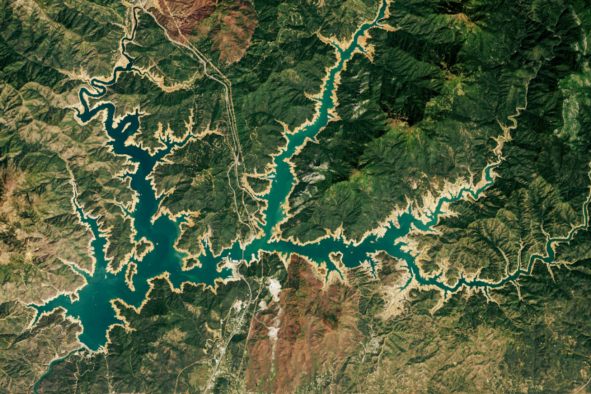The evolution of some of the earliest complex animals on our planet may have been spurred on by other more simple early animals.
These simple marine animals first evolved around 560 million years ago and may have driven the burst in the evolution of complex animal life due to their mixing of seawater, according to a new paper in the journal Current Biology.
This seawater mixing is thought to have occurred despite these early simple animals not being able to swim around.
"It's exciting to learn that the very first animals from 580 million years ago had a significant impact on their environment, despite not being able to move or swim. We've found they mixed up the water and enabled resources to spread more widely—potentially encouraging more evolution," study co-author Emily Mitchell, a researcher at the University of Cambridge's Department of Zoology, said in a statement.
The first single-celled life forms evolved on Earth around 3.7 billion years ago, with multicellular life evolving about 1.7 billion years ago. During the Ediacaran period, around 580 million years ago, the first animals appeared, but were mostly soft-bodied jellyfish-like creatures, unlike any modern animals. These animals are relatively rare in the fossil record due to their low preservation potential, as they lacked hard parts like shells or skeletons.
Then, around 541 million years ago, a rapid diversification of life known as the Cambrian Explosion occurred. This explosion saw the emergence of most major animal phyla and the first appearance of complex body plans. This diversification is well-documented in the fossil record, particularly in deposits like the Burgess Shale in Canada and the Chengjiang Formation in China.
According to the paper, the researchers created 3D reconstructions of the earliest animal ecosystems during the Ediacarian period, around 565 million years ago, to model how seawater was mixed by the earliest animal life. These early life form examples were taken from fossils at Mistaken Point, Newfoundland, Canada, where a coat of volcanic ash was able to preserve these early animals.
"We used ecological modeling and computer simulations to investigate how 3D virtual assemblages of Ediacaran life forms affected water flow. Our results showed that these communities were capable of ecological functions similar to those seen in present-day marine ecosystems," co-author Susana Gutarra, a scientific associate at the Natural History Museum, said in the statement.
One of the key species the researchers modeled was a cabbage-shaped creature named Bradgatia, which reached over 20 inches across in size.
They found that the mixing of seawater by the feeding and respiratory processes of these simple life forms may have affected food particle distribution and increased local oxygen levels. These impacts may have subsequently set the stage for the evolution of more complex life during the Cambrian Explosion.
"The approach we've developed to study Ediacaran fossil communities is entirely new in palaeontology, providing us with a powerful tool for studying how past and present marine ecosystems might shape and influence their environment," co-author Imran Rahman, a principal researcher at the Natural History Museum, said in the statement.
Do you have a tip on a science story that Newsweek should be covering? Do you have a question about early animals? Let us know via science@newsweek.com.
Disclaimer: The copyright of this article belongs to the original author. Reposting this article is solely for the purpose of information dissemination and does not constitute any investment advice. If there is any infringement, please contact us immediately. We will make corrections or deletions as necessary. Thank you.



